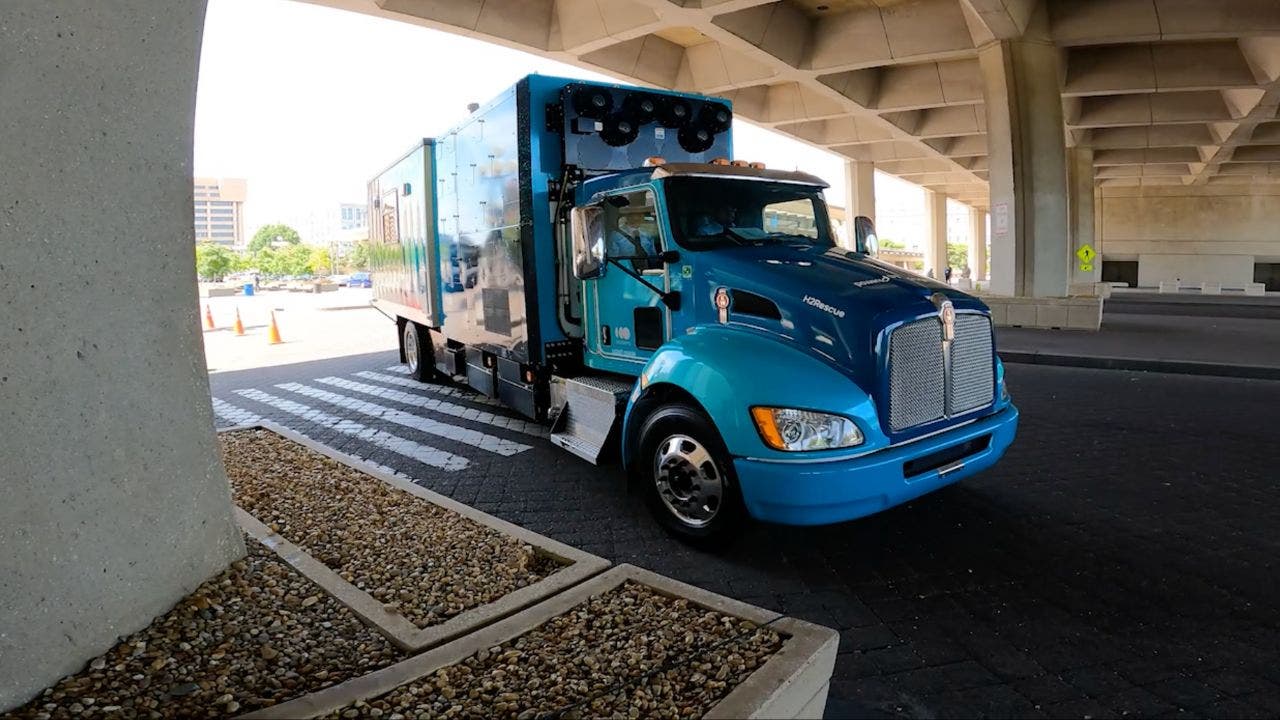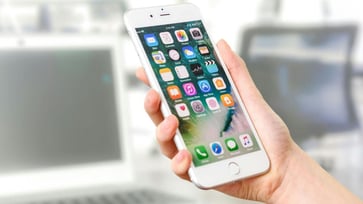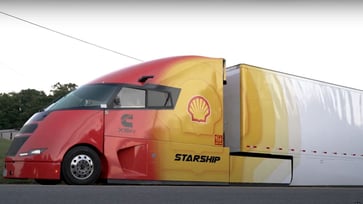A hydrogen-powered rescue truck has set a new world record, despite only emitting water.
Achieving a new milestone in emissions-free driving.

The H2Rescue truck has set a new Guinness World Record, demonstrating the effectiveness of hydrogen-powered trucks in clean transportation.
The vehicle, created through a partnership between Cummins Accelera and the U.S. Department of Energy and Department of Defense, achieved an astonishing feat of traveling 1,806 miles on a single tank of hydrogen.

The record-breaking journey
The H2Rescue truck completed a record-breaking trip in California, transporting 386 pounds of hydrogen fuel. Despite encountering rush hour traffic, the truck maintained speeds between 50 and 55 mph and operated within a temperature range of 60 to 80 degrees Fahrenheit throughout the journey.
A Guinness World Records adjudicator closely monitored the truck's performance and ensured the integrity of the test by sealing the hydrogen tank before departure.

Impressive technology
The H2Rescue truck, powered by a Cummins Accelera fuel cell engine and a 250-kilowatt traction motor, set a record by consuming 370 pounds of hydrogen during its run. The most remarkable feature of this journey was that the truck emitted only water vapor from its tailpipe.

Environmental impact
The H2Rescue truck reduced carbon dioxide emissions by 664 pounds compared to a conventional truck of the same size, demonstrating the potential of hydrogen-powered vehicles in mitigating greenhouse gas emissions and addressing climate change.

More than just a record breaker
The H2Rescue truck is not only meant to break records but is also designed for real-world emergency response situations. The vehicle can generate 25 kilowatts of power from its fuel cells for up to 72 hours without refueling, which is enough to power several FEMA trailers during crucial emergency operations.
The truck, weighing 33,000 pounds, is sturdily constructed to transport vital supplies to disaster zones where infrastructure may be damaged. Additionally, the truck generates approximately one gallon of water per hour as a byproduct, which, while not a significant water source, could provide a small but promising advantage in emergency situations where resources can be limited.

The bigger picture
The potential of hydrogen fuel cell technology in heavy-duty transportation and emergency response applications is significant, as evidenced by the DOE's estimate that replacing traditional emergency response vehicles with H2Rescue trucks could save 1,825 gallons of gasoline per year and reduce annual greenhouse gas emissions by 2.8 tons.

Kurt’s key takeaways
In the future, hydrogen-powered trucks like the H2Rescue are leading the way towards cleaner and more efficient transportation. With zero carbon emissions and impressive range capabilities, they are becoming a viable alternative to traditional fossil fuel-powered vehicles, particularly in sectors that are difficult to decarbonize.
What are your thoughts on the potential of hydrogen-powered vehicles like the H2Rescue on disaster response and environmental sustainability? Please share your thoughts with us at Cyberguy.com/Contact.
To receive more of my tech tips and security alerts, subscribe to my free CyberGuy Report Newsletter by visiting Cyberguy.com/Newsletter.
Follow Kurt on his social channels
Answers to the most asked CyberGuy questions:
New from Kurt:
Copyright 2025 CyberGuy.com. All rights reserved.
tech

15 things to do or try first when you get a new iPhone: 1. Set up your phone with your personal information and preferences. 2. Install your favorite apps and games. 3. Connect your phone to your Wi-Fi network and other devices. 4. Take a few photos and test out the camera. 5. Set up your email and other accounts. 6. Enable security features like Touch ID or Face ID. 7. Customize your phone's settings and appearance. 8. Explore the built-in features and apps on your phone. 9. Connect with friends and family on social media. 10. Set up reminders and alarms. 11. Use the phone's built-in voice assistant. 12. Download and install new apps from the App Store. 13. Set up your phone's screen time and parental controls. 14. Enable automatic updates for your apps and software. 15. Back up your important data to cloud storage or an external hard drive.
techYou might also like
- Five top home inventory apps to safeguard your property during an emergency
- Your smart home gadgets will soon receive a new security seal of approval.
- This year, save time, privacy, and money with these 10 tech upgrades.
- Is your Windows 11 PC frequently restarting? Let's resolve this annoying issue.
- Sony's entry into the electric vehicle market is a surprising move.


















